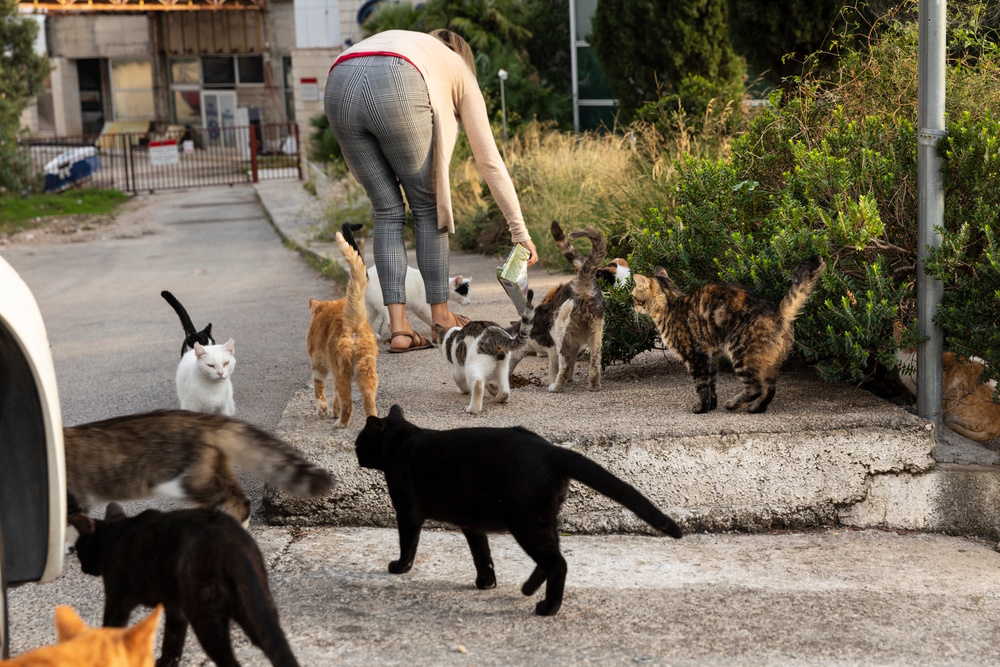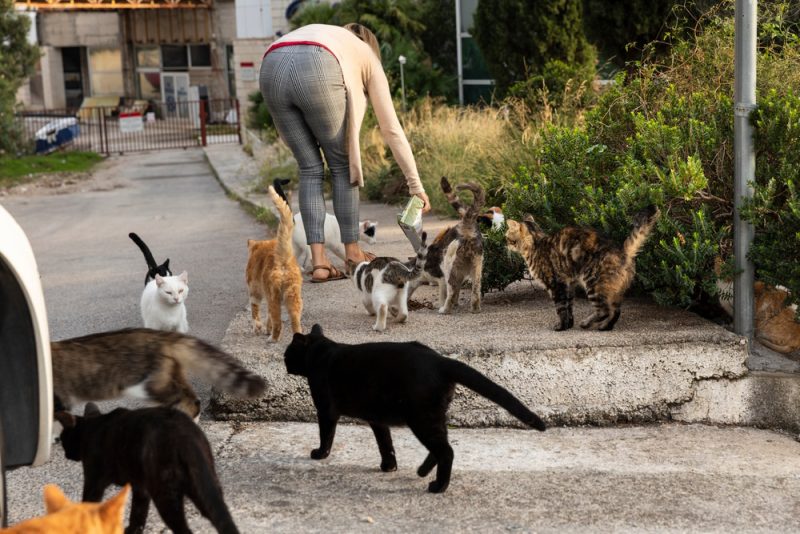Click to Skip Ahead
Note: This article’s statistics come from third-party sources and do not represent the opinions of this website.
Cats are one of the most popular species of pets in the world, second only to dogs. They are considered good pets because they are independent and they don’t need walking, like dogs, but they can be highly affectionate and loving. They don’t need cleaning out like small animals in enclosures, although indoor cats will need their litter trays emptied, and they do need regular feeding and both physical exercise and mental stimulation.
While they make popular pets, however, there is a massive overpopulation problem, partially caused by the fact that they breed profusely. A single unspayed female cat, and her offspring, can theoretically produce as many as 350,000 kittens in just 7 years. While 80% to 90% of the U.S.’s pet cat population is spayed or neutered, this isn’t true of the stray and homeless cat population, which has led to an estimated 30 to 40 million homeless cats living in the U.S.
Although it is very difficult to determine the exact population of homeless, feral, and stray cats, we have found statistics related to this and other factors concerning the cat overpopulation crisis that is currently being faced.
The 14 Cat Overpopulation Statistics
- There are approximately 75 million pet cats in the U.S.
- Approximately 40% of pet cats are adopted.
- 80% to 90% of pet cats are spayed or neutered.
- 6–8 million dogs and cats are surrendered every year in the U.S.
- 2.6 million cats are adopted from U.S. shelters each year.
- There are more than 14,000 rescues and shelters in the U.S.
- There are nearly a million more pets in shelters now than in 2021.
- More cats enter shelters than dogs.
- 330,000 cats were euthanized in 2023.
- 15% more animals in shelters were euthanized in 2023 compared to 2022.
- 80% of animals euthanized in shelters are otherwise healthy.
- There are around 30 to 40 million stray and unhomed cats in the U.S.
- Only 10% of the homeless animal population makes it into shelters and rescues.
- A single unspayed female cat, and her offspring, can produce more than 350,000 kittens in 7 years.
Cat Ownership
1. There are approximately 75 million pet cats in the U.S.
(World Population Review)
Cats are the second most popular species of pets in the U.S. with a population of around 75 million. This includes moggies, which combine two or more breeds, as well as purebred breeds. The figure includes kittens and adult cats, as well as those that are bought from breeders and cats that have been adopted from shelters and rescues.

2. Approximately 40% of pet cats are adopted.
(Humane Pro 1)
Of the pet cat population, 43% of pet cats were adopted from rescues and shelters while a further 24% were taken in as strays or were caught outside. 21% came from friends or relatives, with another 8% having been bought from pet stores and 4% bought directly from breeders. 7% were also said to be bred at home and 3% of the cat population were given as gifts to the pet owner.
In 2018, just 31% of cats were adopted, which means more people are adopting than before, but the number still needs to be higher to be able to control the cat population and manage the large number of cats that end up in shelters.
3. 80% to 90% of pet cats are spayed or neutered.
(Humane Pro 2)
When it comes to pet cats, owners generally have their cats neutered or spayed. Doing so can prolong the life expectancy of cats because it prevents male and female cats from developing certain cancers. It can also make the cats less likely to run away or stray from the house.
Between 80% and 90% of pet cats have been spayed or neutered, but this does mean there are still between 7.5 and 15 million intact pet cats. And the ratio of stray, feral, and homeless cats that are unaltered is likely to be much higher than this figure.
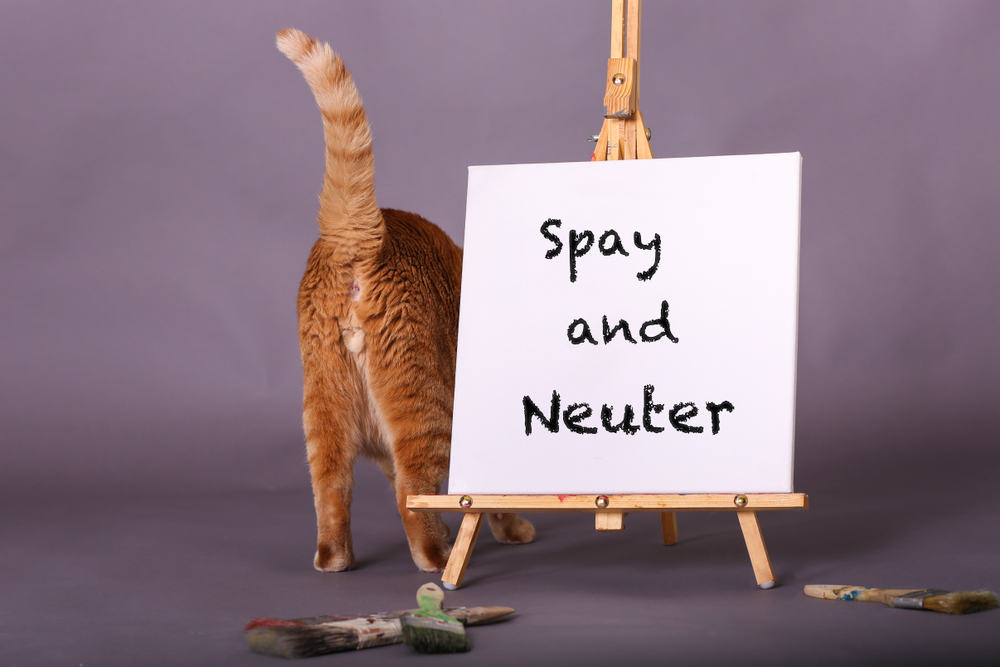
4. 6–8 million dogs and cats are surrendered every year in the U.S.
(Pride And Groom)
Owners surrender their pets for various reasons. Since 2021, more people are surrendering pets because they don’t have the time to spend with them anymore, while the cost-of-living crisis means that a lot of owners don’t have the money to be able to provide proper care.
Other reasons include changes in personal circumstances or home life, such as new pets not getting along with existing pets or the introduction of a new baby to the home. In total, between 6 and 8 million pet cats and dogs are surrendered every year.
5. 2.6 million cats are adopted from U.S. shelters each year.
(Shelter Animals Count)
Shelters are packed with cats looking for homes, even though an estimated 2.6 million cats are adopted from rescues and shelters. Shelters are centers that get government funding. Some of the staff are paid.
Rescues do not receive any funding and are typically staffed entirely by volunteers. They depend on adoption fees and donations from the public to survive.
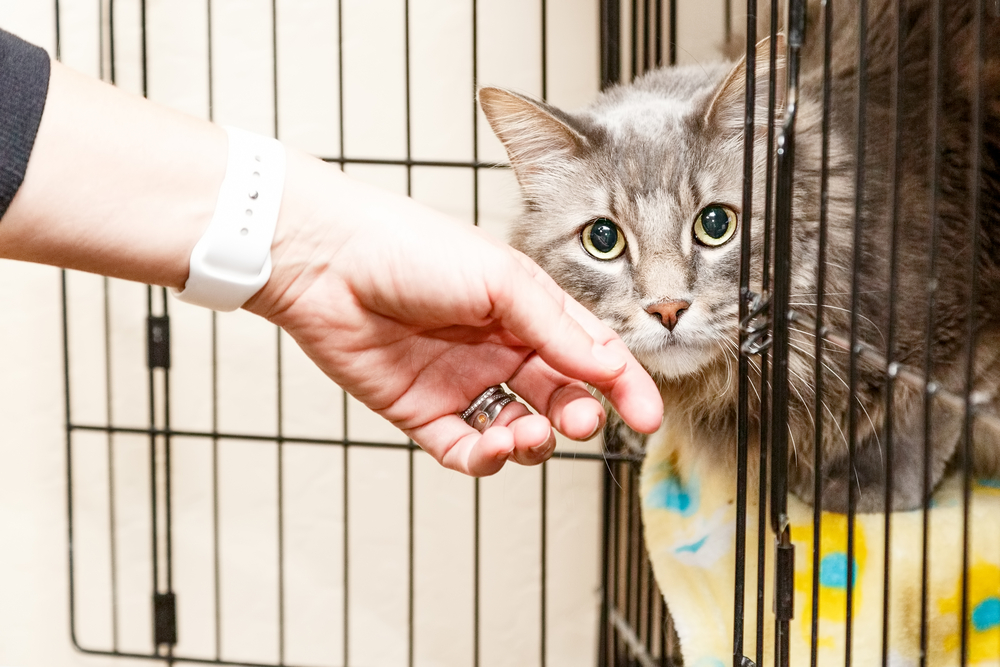
Cats In Shelters
6. There are more than 14,000 rescues and shelters in the U.S.
(Shelter Animals Count)
Rescues and shelters perform invaluable services. They take in stray, feral, and homeless cats. They care for the cats while they are in their care, and they will look for new loving homes with adopters. Some shelters also send cats out to foster carers, who can help rehabilitate cats so they will settle into a new home better when they are given the opportunity.
Although there is not an official list or register of these types of services, there are estimated to be more than 13,000 across the U.S. This number is made up of 5,000 shelters, which receive government funding, and more than 9,000 rescues, which are not government funded.
7. There are nearly a million more pets in shelters now than in 2021.
(USA Today)
During COVID-19 and the lockdowns that were implemented in order to try and stop the spread of the pandemic, many existing and new owners took on pet cats. However, since lockdowns ended, owners have less time to spend looking after their cats as people have returned to work. This has led to a massive surge in the number of cats that have been surrendered to facilities.
Nearly a million more pets are in shelters and rescues today than in 2021, which represents a significant increase in the homeless cat population.
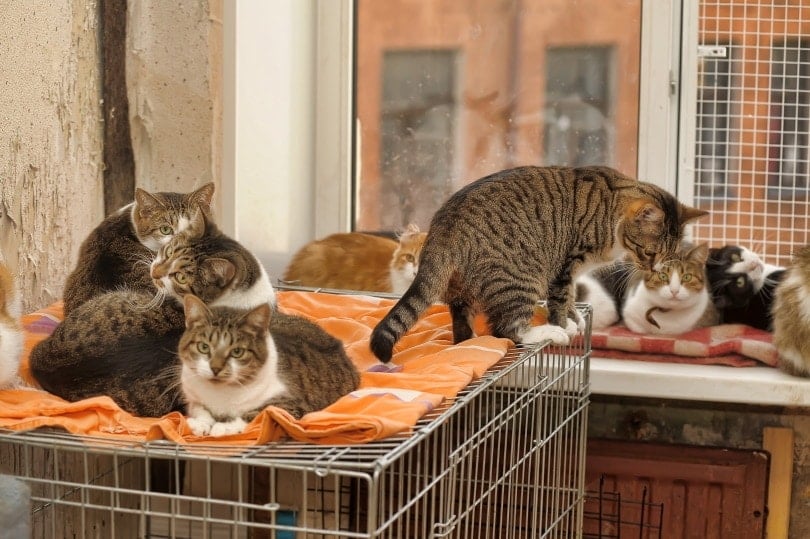
8. More cats enter shelters than dogs.
(Shelter Animals Count)
Although the numbers are roughly similar, slightly more cats are surrendered than dogs, even though cats are said to be more independent.
Of the 6.5 million cats and dogs estimated to enter shelters, 3.3 million were cats and 3.2 million were dogs. This is higher than in 2022 and 2021 but represents a slight drop when compared to 2019, which was the last full year before Covid lockdowns occurred.
9. 330,000 cats were euthanized in 2023.
(Shelter Animals Count)
Unfortunately, with more cats entering shelters than being adopted from shelters, it means that some of the cats in shelters end up being euthanized. The alternative is that shelters refuse to take more cats in, which leads to an increase in the population of homeless and feral cats.
It’s a difficult decision for shelters and rescues to make and while some do have a no-kill policy, which means they won’t euthanize healthy animals, a total of 330,000 cats were euthanized because there wasn’t room for them in shelters, in 2023.
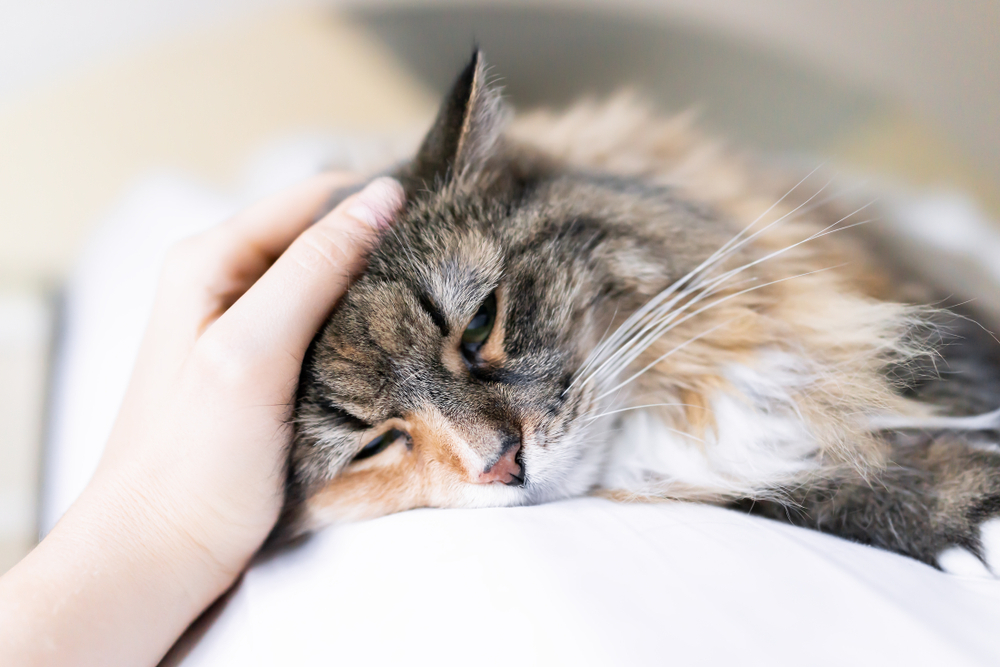
10. 15% more animals in shelters were euthanized in 2023 compared to 2022.
(NBC Boston)
There are so many more pets being relinquished by owners today, compared to a few years ago, that there was a 15% increase in the number of cats and dogs euthanized in animal shelters last year, compared to 2022.
Although the ratio of cats being adopted continues to increase, the size of the cat population and the number of cats being handed over to rescues is increasing more quickly, which means that the number of euthanizations will continue to increase at a quicker rate.
11. 80% of animals euthanized in shelters are otherwise healthy.
(Kitten Coalition)
Some shelters and rescues have adopted a no-kill policy. This means they won’t euthanize any animal that is healthy and doesn’t suffer from severe behavioral problems. However, this policy means that the shelters fill up quickly and they cannot take in new animals.
Any abandoned or homeless animals are left to tend themselves, which means it is a tough call to make for the organizers. Despite this policy being adopted by some shelters, more than three-quarters of the animals that are euthanized at shelters are otherwise healthy.
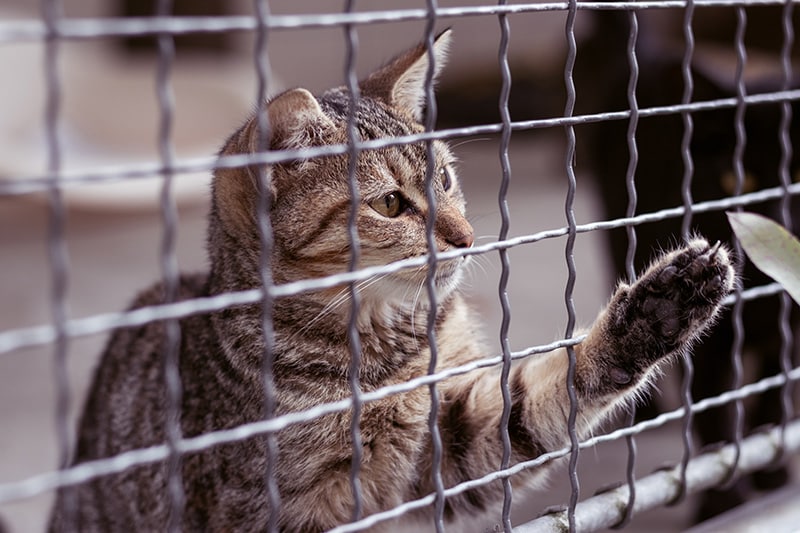
Homeless Cats
12. There are around 30 to 40 million stray and unhomed cats in the U.S.
(Humane Pro 1)
As well as cats in homes and those in rescues and shelters, there is a large population of cats that live in towns and cities with no homes. There are also feral cats that live in more urban areas.
It is very difficult to determine the exact population of these cats, but it is estimated between 30 and 40 million cats are living without homes. This means there are around half as many cats without homes as there are with homes. And there are 10 times as many cats living on the streets as entering shelters each yet.
13. Only 10% of the homeless animal population makes it into shelters and rescues.
(PETA)
Although life in a shelter is not ideal for a cat, it is better than living on the streets or in fields. Life on the streets is especially difficult, with cats being involved in traffic accidents, attacked by people, and being more likely to suffer ill health.
These cats are also unlikely to be spayed or neutered which means they are very likely to further increase the population of homeless cats. Only around 10% of the homeless animal population, which includes both cats and dogs, makes it into shelters to have a chance of finding a loving home.
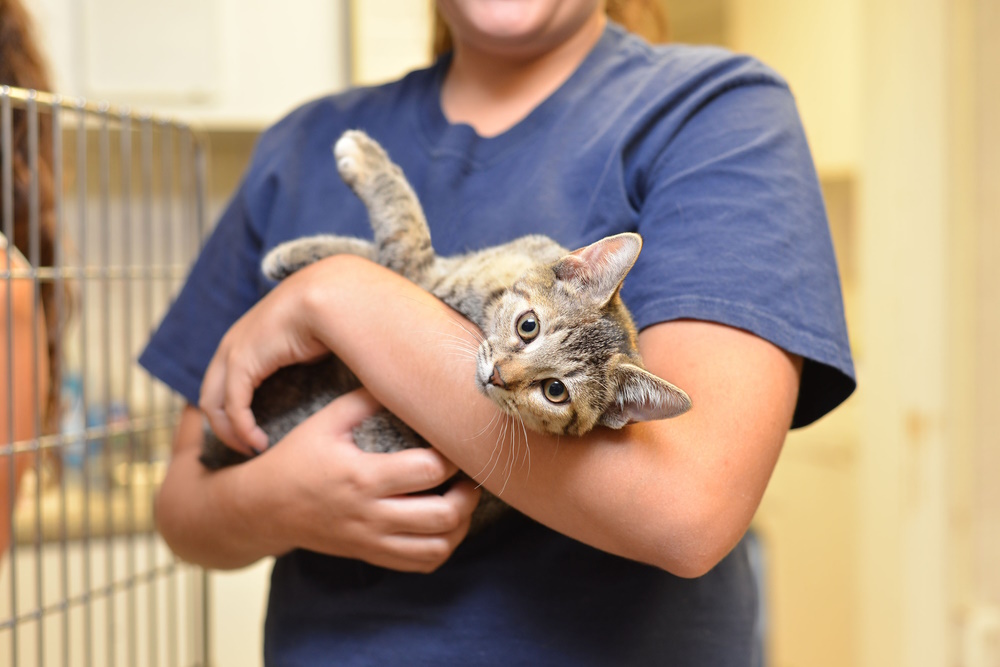
14. A Single unspayed female cat, and her offspring, can produce more than 350,000 kittens in 7 years.
(PETA)
One of the reasons that there is such a big cat overpopulation problem is that cats are prolific breeders. Females can reach sexual maturity at just four months old and can continue breeding until they are eight years old. A typical litter contains between one and nine kittens, and a female can have up to four litters in one year.
This means that a single female cat can have as many as 36 kittens a year, or more than 250 in her life. If those kittens go on to have kittens of their own, it is easy to see how overpopulation occurs. A single female cat and the offspring she produces could, in theory, have 350,000 kittens in just 7 years.
Frequently Asked Questions (FAQ)
Is The Cat Population Increasing?
It’s impossible to give exact numbers, but the population of cats is increasing. This is especially true of stray and homeless cats, and there has also been a significant increase in the number of cats in rescues and shelters. However, the number of cats being kept as pets is significant.
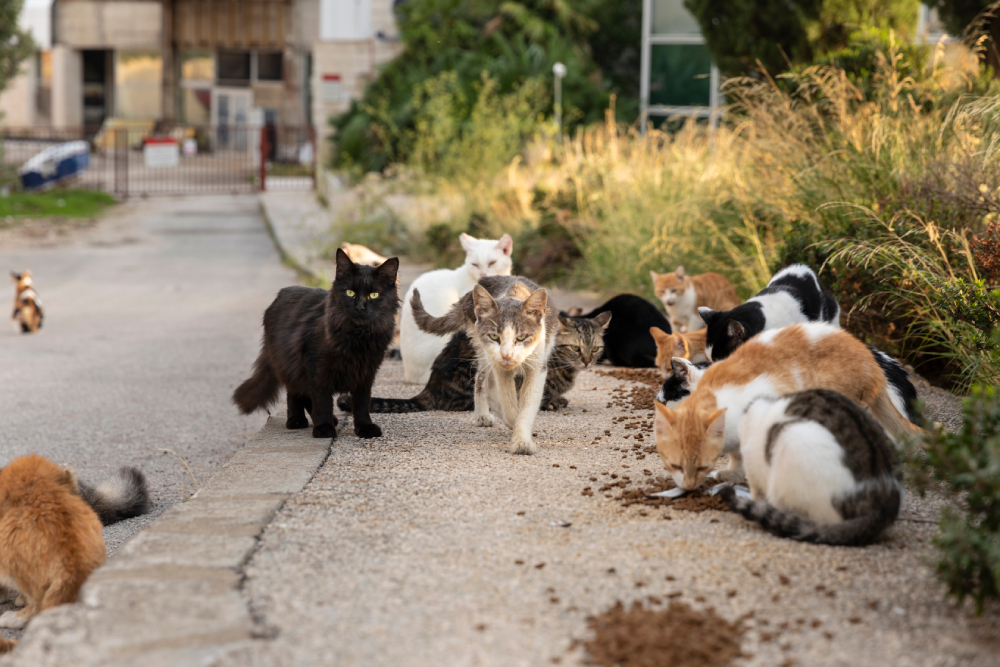
Why Is the Cat Population So High?
Several factors have led to the increase in cat population. First, they are prolific breeders, and a single female cat can have hundreds of kittens in its lifetime. While the vast majority of pet cats are neutered or spayed, it only takes a small portion of the population to get pregnant and this leads to a big increase in cat numbers.
What’s more, stray and feral cats are less likely to have been altered, which means more cats being born on the streets. Finally, because shelters and rescues are packed, it means that more cats are being left homeless, further exacerbating the problem.
What Should You Do If You Find a Stray Cat?
Remember that some cats are outdoor cats. Just because you see one outdoors, doesn’t necessarily mean it is homeless. If you see the same cat and it is looking thinner, you can try leaving a note on its collar. If it is owned, the owner will hopefully report back to you.
If you do find a stray cat, and it lets you approach it, look for a collar or ID tag. Alternatively, contact a warden or have the cat scanned at a local vet to check for a microchip. Cats do wander, which means the stray cat you have seen may be lost.
Should All Cats Be Neutered or Spayed?
To help prevent further overpopulation, all cats should be spayed or neutered. What’s more, this doesn’t just help control the population problem. Intact cats are more likely to develop certain cancers and other diseases, which means having your cat spayed can help prolong its life and keep it healthier.
Altered cats are also less likely to wander, so there is less chance that your cat will go missing.

Does Neutering Harm Cats?
Neutering is the removal of the testes from male cats, while spaying is the removal of the ovaries and uterus from females. Both procedures can help prevent certain health issues and will prevent unwanted pregnancies and births. It can also calm a feisty cat, prevent it from roaming, and may even stop them from spraying in the house to mark territory.
Conclusion
Cats are popular pets. They can be very affectionate, don’t need to be taken on long walks every day, are fun, and offer companionship. However, they do need regular care and they do cost money throughout their lives.
Some owners that take cats on find they cannot afford to keep them or don’t have enough time to spend with them, and these eventualities can lead to cats being surrendered or abandoned. This leads to overpopulation, especially when the stray cats have not been neutered or spayed, and is one of the main reasons why there is a population of 30 to 40 million stray cats in the U.S. alone.
See Also:
- How Many Cats Lived on the Titanic? Facts & History
- Do Pets Affect Intimacy Between Pet Parents? Survey Results
Featured Image Credit: Lea Rae, Shutterstock

